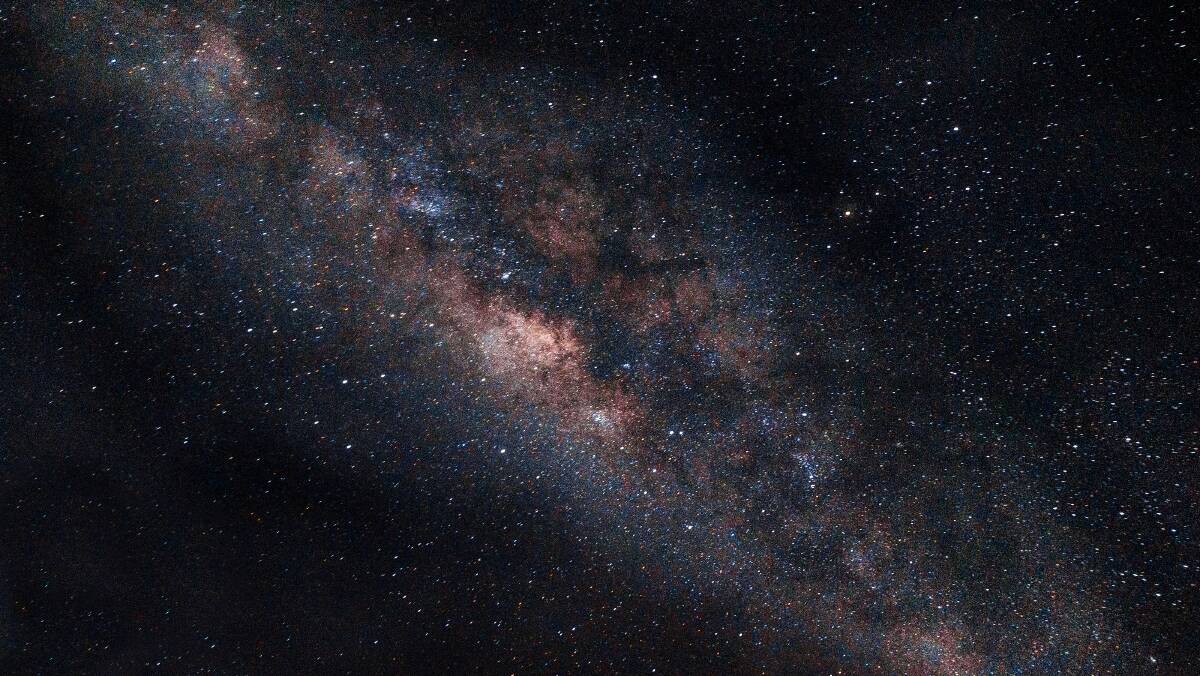
The centre of our Milky Way galaxy. I don't know about you, but hearing that phrase fills me with a sense of adventure. If we were to create a spaceship and fly there, what would be found?
For a long time, astronomers didn't know where the centre was. In the early 1900s, astronomers such as Harlow Shapely and Walter Baade found that globular clusters (huge groups of stars in the outskirts of the galaxy) seemed to orbit around an area in the constellation of Sagittarius. However, because the galaxy is filled with interstellar dust, which blocks optical light, they couldn't use normal telescopes to see the centre as it was obscured from view.
Enter the Australian radio astronomers. In the 1950s, a group of CSIRO scientists found an extremely bright source of radio emission coming from Sagittarius, which became known as Sagittarius A. After further analysis, it was found that this radio emission was probably located at the galactic centre, and 1958 was adopted as the zero point of the galactic co-ordinate system. Sagittarius A was made up of a lot of different components, including an incredibly potent point, which in 1974 was coined Sagittarius A* by astronomer Robert Brown. The asterisk was added because it was exciting.
But what exactly was Sagittarius A*? A bright star? A herd of alien cats? Well, further studies of the object continued to roll in - particularly using infrared and radio wavelengths that weren't blocked by dust. A team of scientists led by Reinhardt Genzel from the Max Planck Institute for Extraterrestrial Physics monitored the orbit of a star that was very close to Sagittarius A*, known as S2. By carefully tracking the star's motion, they were able to produce an estimate of its orbit and measure the mass of the object at the centre by how much gravity was needed to keep it in orbit.
They found it was a whopping 4 million times the mass of the sun, and based on how small it was, smaller than our solar system, it must be a supermassive black hole. At the time, this was the best evidence that black holes existed.
As time went on, things became more and more convincing, especially as the star S2 approached its closest point to Sagittarius A* (its orbital perihelion). At that moment in 2018, astronomers using the new instrument GRAVITY on the Very Large Telescope Interferometer tracked the motion of the star with extreme precision. Along with the orbit, they found emission from Sagittarius A* that could only align with Einstein's theory of general relativity if it was a black hole.
The saga came to a climax in 2020 when Reinhardt Genzel and his colleague Andrea Ghez (who used the Keck telescopes to track S2 around Sagitarius A* in a similar way) won the Nobel prize for physics "for the discovery of a supermassive compact object at the centre of our galaxy".
So, on a clear night, I invite you to stare up into the constellation of Sagittarius, which looks like a teapot, and follow the "steam" coming out the spout. At the spot where the "steam" (or dust) is thickest, know that you are looking up at the centre of our galaxy, where a 4-million-solar-mass black hole is emitting intense radio waves across the universe. Now that is cool.
- Jonah Hansen is a PhD student specialising in space interferometry at Mount Stromlo Observatory, at the Australian National University.







